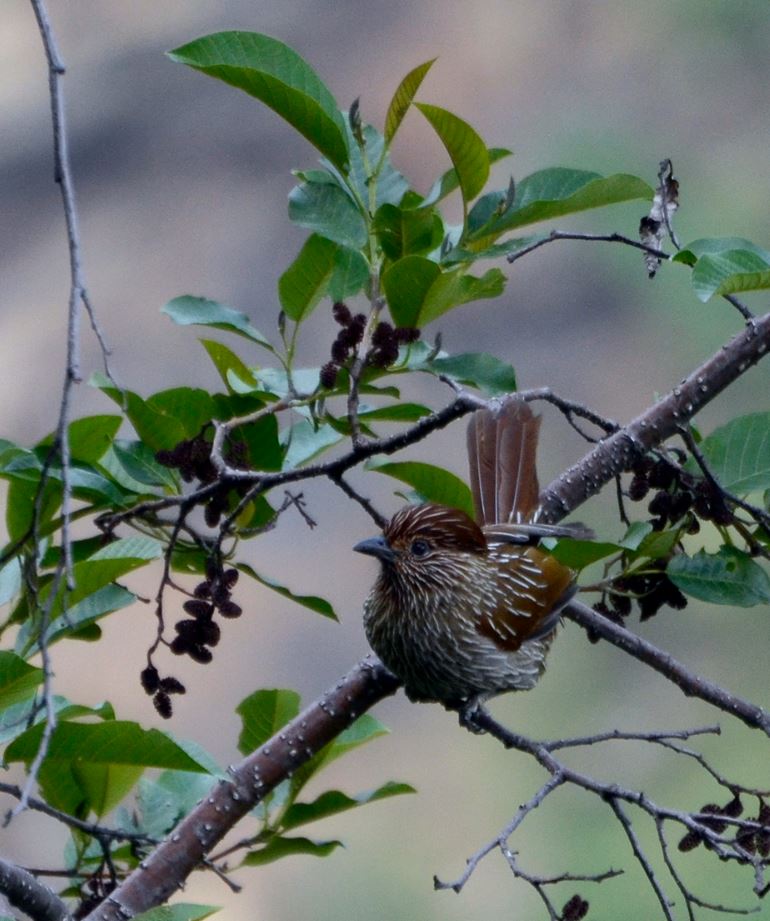The Striated-laughingthrush has a charming appearance with its mainly brown feathers and subtle white lines that elegantly cover its entire body. Despite its lack of striking patterns, these delicate details make it stand out and alluring to the eye. Get to know this bird for its unique beauty.
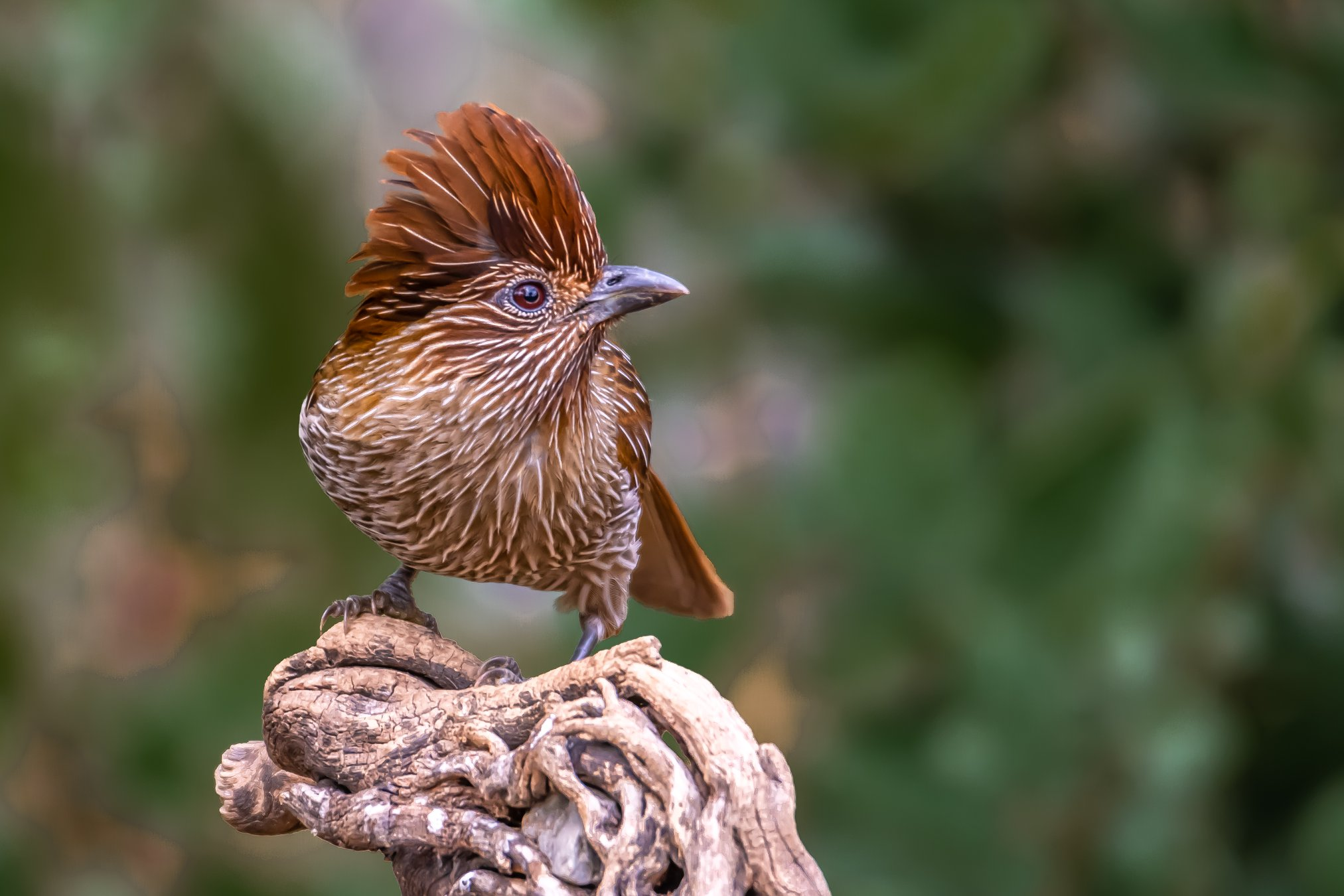
Describing the striated laughingthrush, a type of passerine bird in the Leiothrichidae family, is like painting a picture with words. The bird’s upper plumage, sides of the head and neck, chin, and throat are a deep shade of umber-brown that fades into a lighter brown on its lower plumage. What’s really interesting about this bird’s feathers is that they all have a long white streak. This includes the feathers on the upper and lower parts of the body, wing coverts, and tertiaries. While more prominent on the abdomen and under tail-coverts, these streaks can be seen throughout the bird’s feathers. The striated laughingthrush also has dark brown quills with hoary outer webs on the first few primaries and a pale chestnut hue on the rest. Its tail is chestnut with white tips on the outer feathers. The bird’s black bill, dusky plumbeous legs, and reddish-brown iris, as noted by Jerdon, complete its unique appearance.
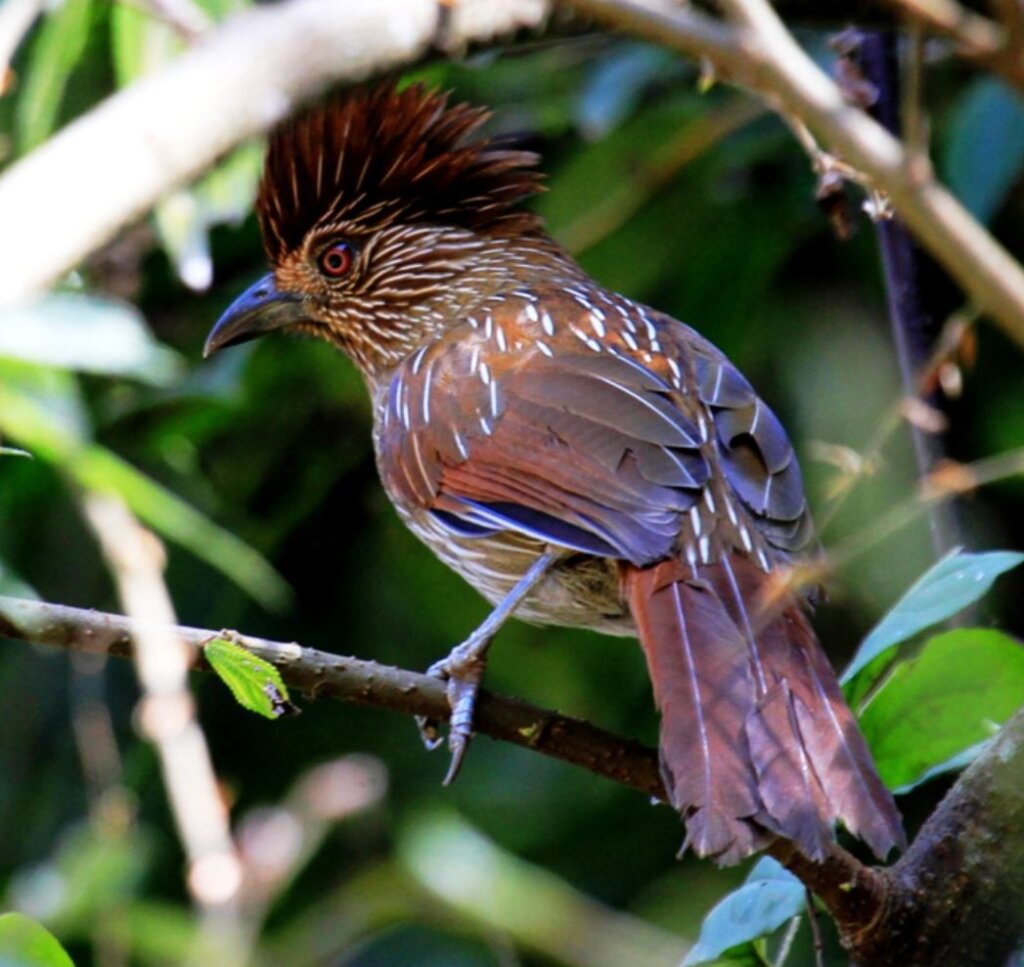
The laughingthrush in the photo, which was uploaded by Wikian01 and cropped for use, has a compact beak and a fluffy crest that give it a similar appearance to an unadorned barwing. Its hue is primarily brown and it has thin white stripes distributed across its body.
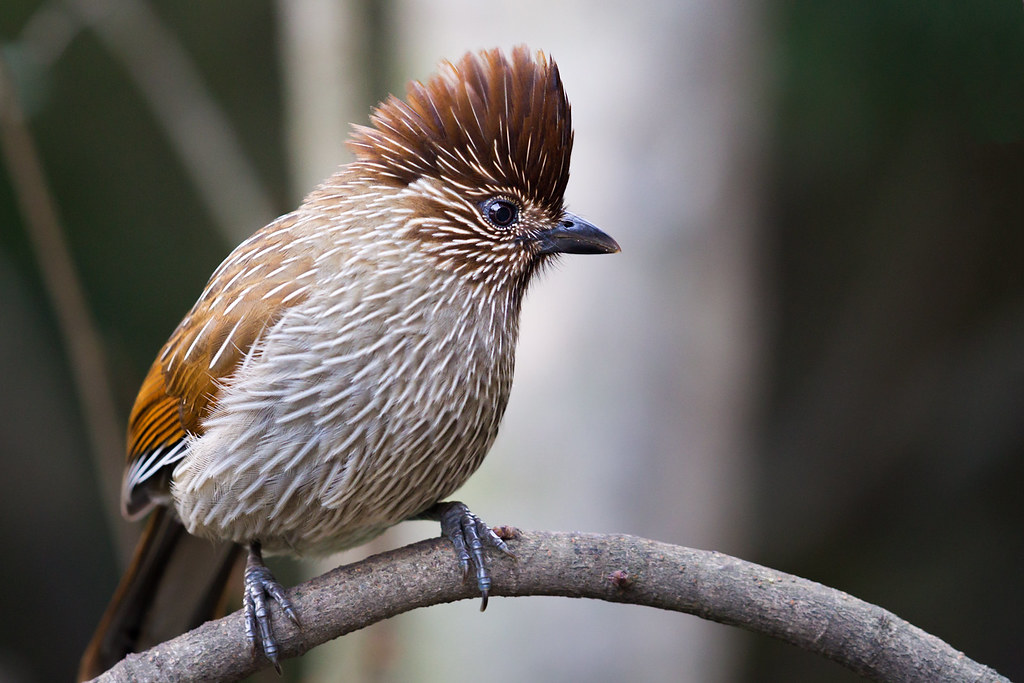
The Himalayan region is home to this particular type of species, which can be found from the Sutlej valley all the way to Bhutan. They typically inhabit areas with altitudes ranging from 6000 to 9000 feet. Although there have been claims of sightings in Birbhum, Bengal, it is highly doubtful if these are accurate.
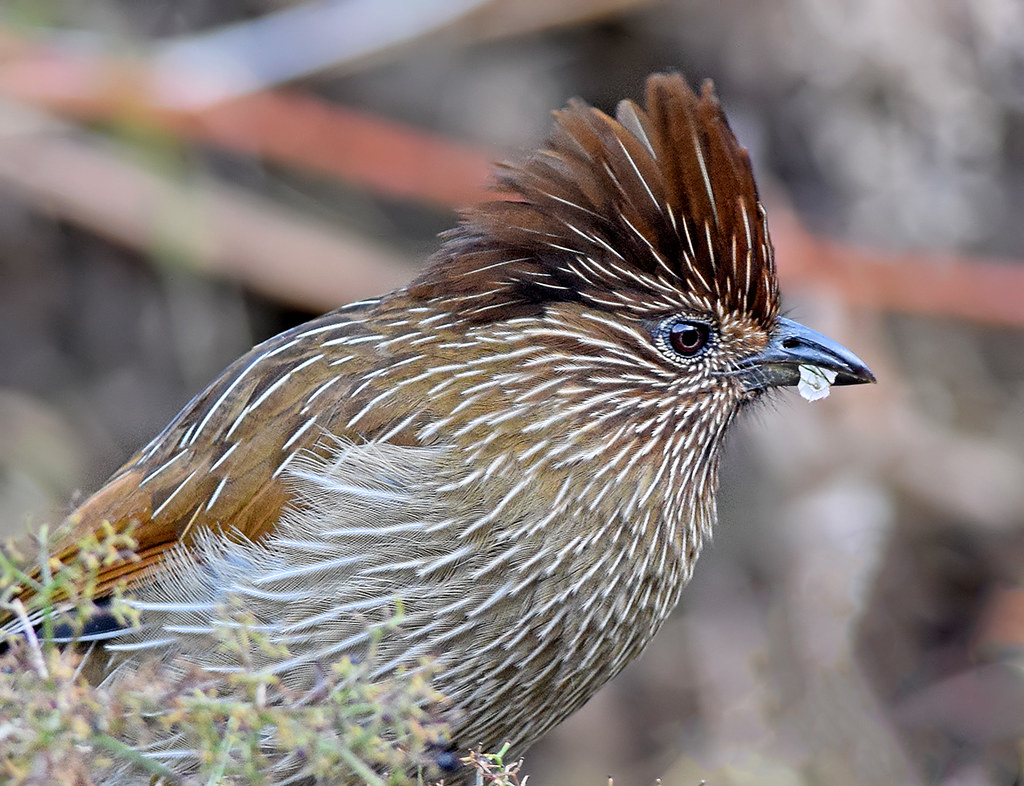
The photo entitled “striated laughingthrush” captured by T_Monk is authorized under CC BY 2.0. This bird can be primarily found in subtropical or tropical moist lowland forests and subtropical or tropical moist montane forests.
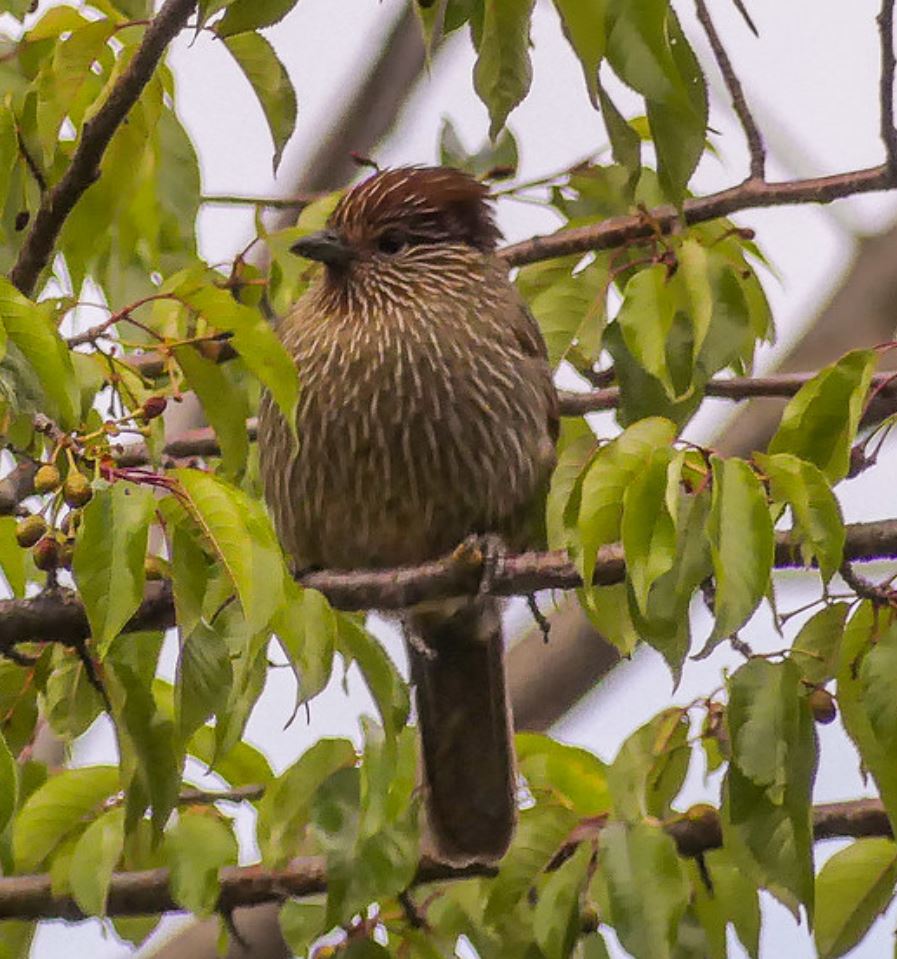
The “Striated Laughingthrush” photographed by Mike Prince is known for scavenging in the middle and lower levels of its habitat, specifically in the tall trees’ canopy, lower branches, and undergrowth. Its diet consists of a diverse range of food sources such as beetles, berries, and seeds. This bird also has a fondness for aromatic wintergreen, flowers, and rhododendron, as well as gelatinous lichen.
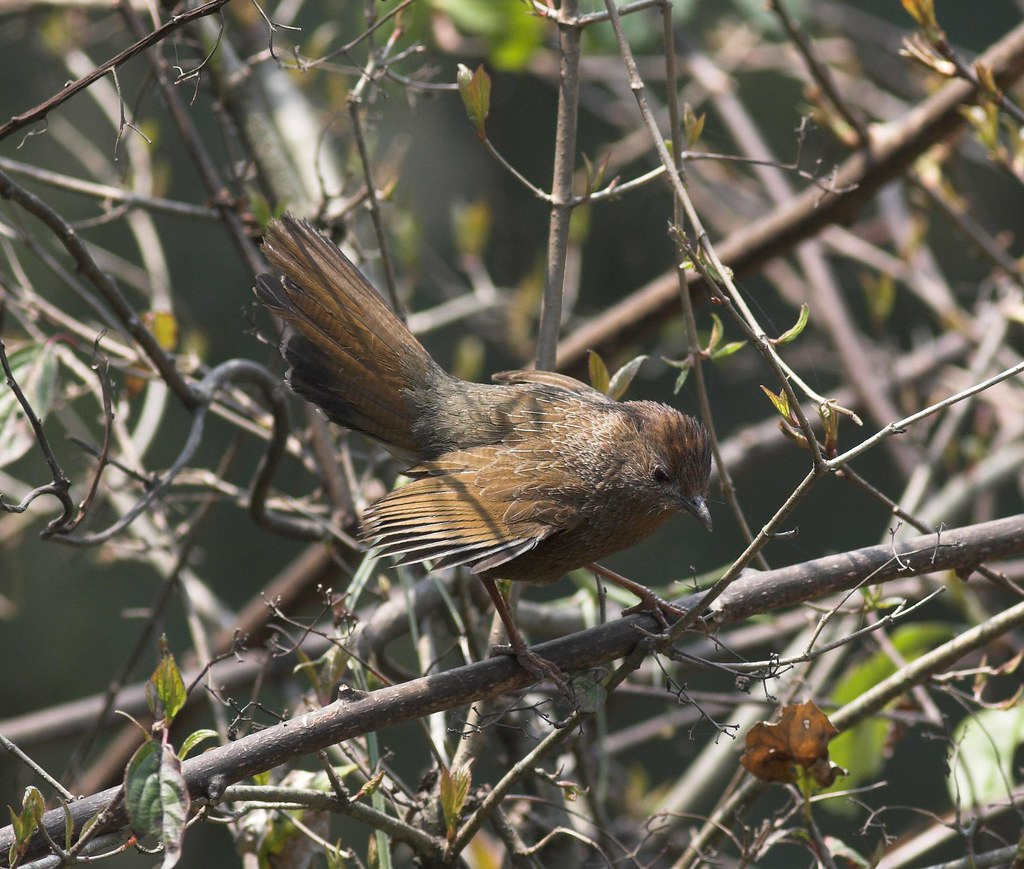
Allan Drewitt’s photograph titled “Striated Laughingthrush Garrulax striatus” is under the CC BY 2.0 license. The Striated Laughingthrush, as stated by Jerdon, is notable for its unique calls that sound like a hen clucking after laying an egg. The bird usually breeds between May and July, wherein it creates a cup-shaped nest from grass and other materials within a low tree. During this period, it lays only two blue eggs, some of which are spotless while others have brownish-red specks and measures around 1.3 by 0.9 inches in size.
